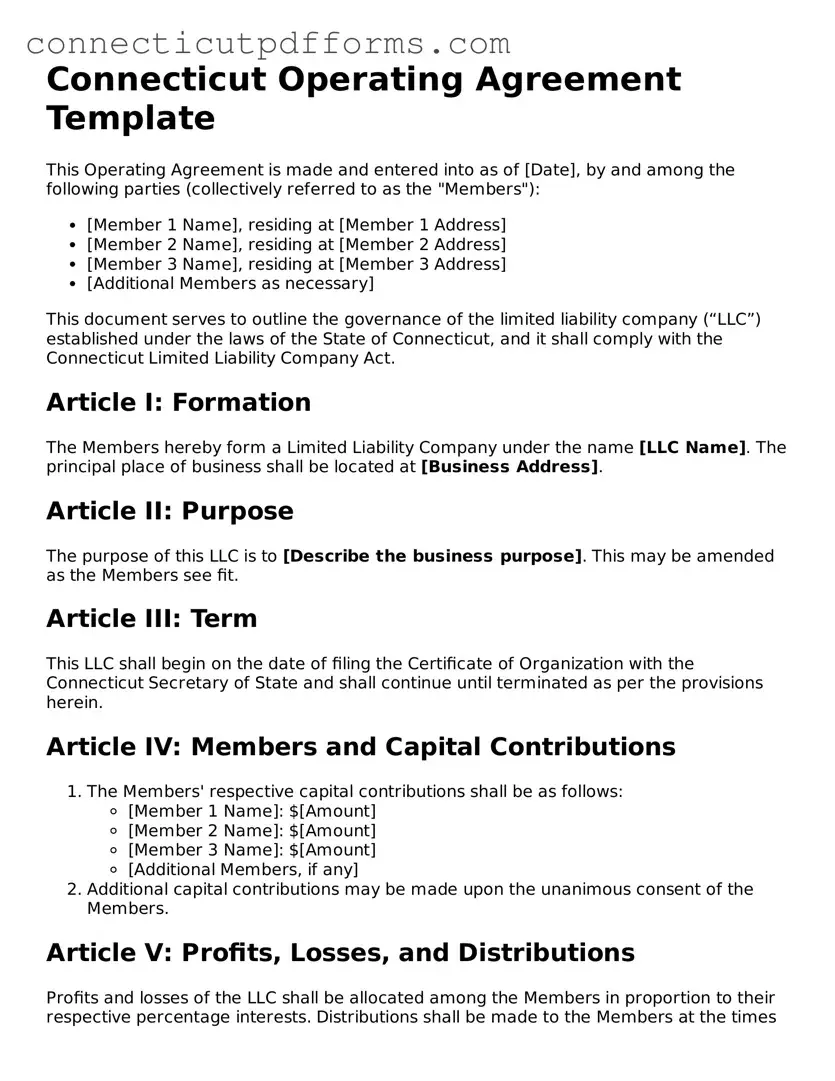Connecticut Operating Agreement Template
This Operating Agreement is made and entered into as of [Date], by and among the following parties (collectively referred to as the "Members"):
- [Member 1 Name], residing at [Member 1 Address]
- [Member 2 Name], residing at [Member 2 Address]
- [Member 3 Name], residing at [Member 3 Address]
- [Additional Members as necessary]
This document serves to outline the governance of the limited liability company (“LLC”) established under the laws of the State of Connecticut, and it shall comply with the Connecticut Limited Liability Company Act.
Article I: Formation
The Members hereby form a Limited Liability Company under the name [LLC Name]. The principal place of business shall be located at [Business Address].
Article II: Purpose
The purpose of this LLC is to [Describe the business purpose]. This may be amended as the Members see fit.
Article III: Term
This LLC shall begin on the date of filing the Certificate of Organization with the Connecticut Secretary of State and shall continue until terminated as per the provisions herein.
Article IV: Members and Capital Contributions
- The Members' respective capital contributions shall be as follows:
- [Member 1 Name]: $[Amount]
- [Member 2 Name]: $[Amount]
- [Member 3 Name]: $[Amount]
- [Additional Members, if any]
- Additional capital contributions may be made upon the unanimous consent of the Members.
Article V: Profits, Losses, and Distributions
Profits and losses of the LLC shall be allocated among the Members in proportion to their respective percentage interests. Distributions shall be made to the Members at the times and in the amounts determined by the Members.
Article VI: Management
The LLC shall be managed by its Members. Decisions will require a majority agreement, unless otherwise specified in this Agreement.
Article VII: Indemnification
The LLC shall indemnify to the fullest extent permitted by law any Member or officer from any and all claims, losses, expenses, and liabilities incurred in connection with the LLC.
Article VIII: Amendment
This Agreement may be amended only by a written agreement signed by all Members.
Article IX: Governing Law
This Agreement shall be governed by and construed in accordance with the laws of the State of Connecticut.
IN WITNESS WHEREOF
The Members have set their hands and seals as of the day and year first above written.
- _____________________________
[Member 1 Name]
- _____________________________
[Member 2 Name]
- _____________________________
[Member 3 Name]
- _____________________________
[Additional Members, if any]
